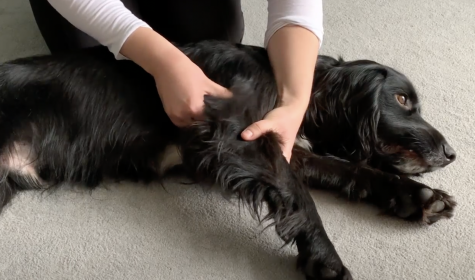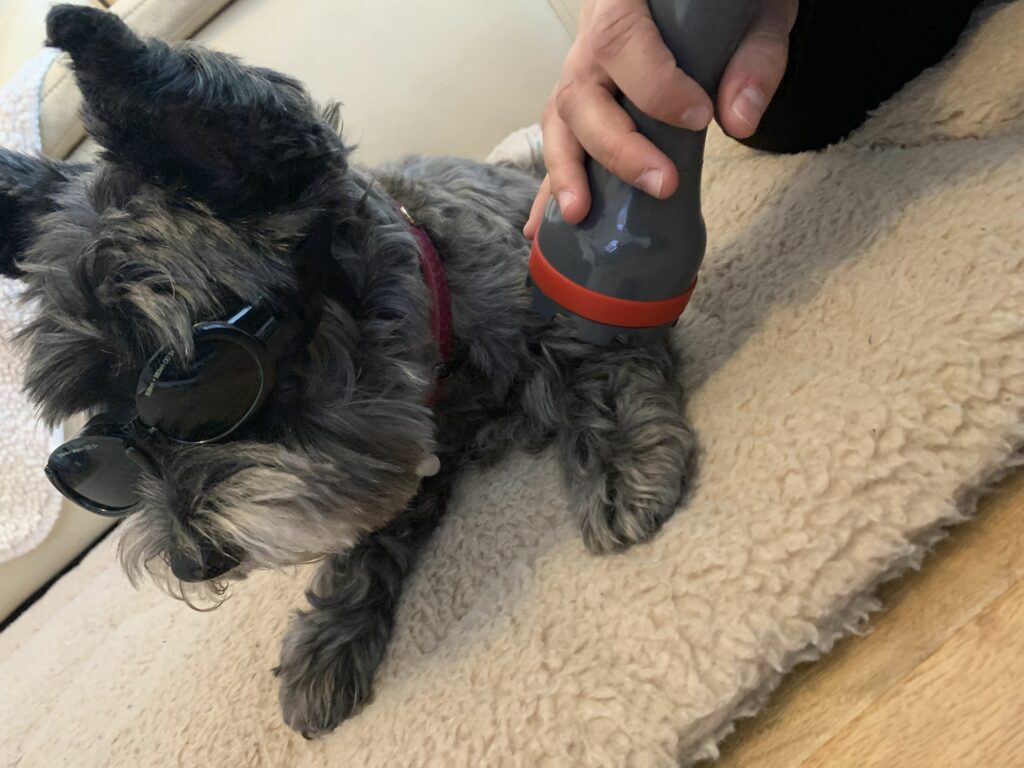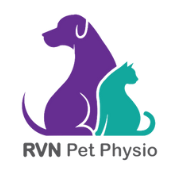Our Mobile Pet Physiotherapy Services
RVN Pet Physio offers a range of pet physiotherapeutic services that all can be performed in the comfort of your own home.
These services will be explained in detail during your initial consultation but to find out more, please see below for a brief description of what they are and how they can help your pet.
Manual Therapies
Manual Therapies includes soft tissue mobilisation or massage, joint range of motion and joint mobilisations; all of which influence joint movement and function.
Massage is the movement of soft tissues and includes a variety of techniques targeting both superficial and deep tissues, with the goal of normalising tissue function. Techniques include passive touch to accustom the patient to touch, effleurage to warm up the tissues and promote circulation and petrissage a kneading technique used to reduce muscle tension.
Joint mobilisations are performed to restore the normal range of motion.
You will be taught massage and ROM techniques to enable treatment to carry on between sessions.
Benefits of Manual Therapies
- Decreased Pain
- Improved Circulation
- Reduced Muscle Spasm
- Enhanced Muscle Flexibility and Elasticity
- Improved Rang of Motion
- Fibre Realignment and Breakdown of Scar Tissue

Laser Therapy / Photobiomodulation Therapy (PBMT)
Laser Therapy or Photobiomodulation Therapy (PBMT) is a safe, effective, evidence-based therapy that can be used to treat a variety of musculoskeletal conditions.
PBMT uses wavelengths of light, which have bio stimulatory effects on target tissues and a non-invasive hand piece is moved over the treatment area to deliver the light. The light energy penetrates the skin and is absorbed by the mitochondria (power houses) in the damaged or diseased cells, which helps to improve energy production, cell regeneration and enhances tissue function.
The treatment time depends upon the animal and the condition being treated and can varying from 2-7 minutes per area.
There is no need to clip hair and your pet will feel a gentle massage and warming light with most relaxing and enjoying the treatment session.
You will be able to stay with your pet for the duration of treatment and will be provided with eye protection as will your pet, if appropriate.
Benefits of Laser Therapy
- Alleviation of Pain
- Regulation of Inflammation
- Promote Tissue Repair
- Muscle Relaxation
- No Need to Clip Hair
- Quick to Administer
Conditions Treated with PBMT
- Wound Healing
- Osteoarthitus
- Post-Surgical Healing/Pain Relief
- Hip Dysplasia
- Cruciate Disease & Tendonitis
- Lick Granulomas

Therapeutic Exercises
Therapeutic Exercises are the basis of physiotherapy treatment and rehabilitation; it should be a component of every patient’s programme.
With immobilisation or disuse, musculoskeletal tissues undergo changes, the most obvious of which is muscle wasting and strength also decreases rapidly in the first week. The impacts on cartilage from disuse of joints include reduction and thinning of articular cartilage and decreased synovial fluid production, resulting in an unhealthy joint.
Therapeutic Exercises help to manage these consequences, but must be specific for the patient, condition, and the predetermined treatment/rehabilitation goals.
When to begin Therapeutic Exercises is determined by the injury/disease, surgical technique, patients’ overall health, and Veterinary Surgeon advice. Early rehabilitation post-surgery has been shown to improve outcomes, but pain must be controlled and there should be no compromise to the surgical site or procedure.
In the early stages of rehabilitation, the plan should be focused on range of motion, balance and early ambulation. As the patient progresses the exercise focus shifts to the restoration of function, strength and endurance.
Therapeutic Exercises need to be performed regularly, so for the best outcome, should be incorporated into a home exercise programme.
Benefits of Therapeutic Exercises
- Restoration of Movement
- Improved Gait and Proprioception
- Increased Strength and Function
- Increased Range of Motion
- Decreased Pain
- Improved Healing


